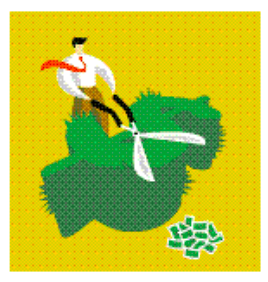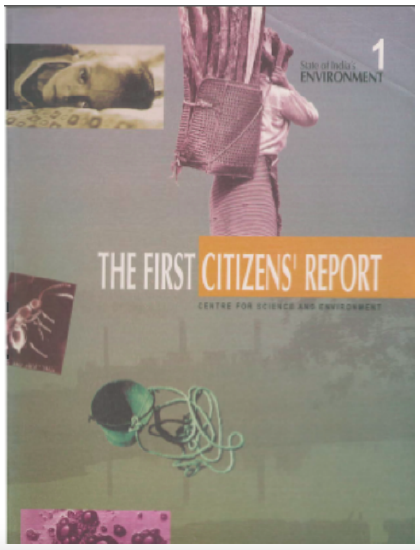3.4: Ethical Analysis of Data
- Page ID
- 51536
As you analyze data, avoid cooking, trimming, and cherry picking data.

Cooking data is the practice of falsifying data. It can also be the practice of deleting data that does not prove a hypothesis in order to present a stronger argument that proves the hypothesis. For example, what if you were ordering pizza for an event, and you really wanted every pizza to have bacon on it. You LOVE bacon. If you surveyed 100 people about whether or not they liked bacon, and 50 people said yes, and 50 people said no, but 25 of the "no's" were vegetarians, then you could report the data truthfully, that half of the people surveyed like bacon. Perhaps half of the pizzas should have bacon on them. Or, you could "cook" the data by excluding the vegetarians from the survey because, as you reason, it's not that they don't like bacon but that they don't EAT bacon, which is completely different from liking it. You could then say that 2/3 of the people surveyed like bacon, or 67%, and therefore you have a rationale to order bacon on all the pizzas.
Trimming data is a method used to lessen the effect of statistical outliers on the results of a study. If you trim data, then you must tell your reader that you trimmed the data, and to what percent you trimmed it. For example, if you were ordering pizza for an event, and you really wanted every pizza to have bacon on it, then you could survey 100 people about whether or not they liked bacon. Your survey also includes a question about what planet people are from (this is a ridiculous example, but I just wanted it to be simple). When you look at the results, you see that 55 people really like bacon. You notice that 45 people say they don't like bacon, but that there are irregularities in that data. For example, 10 of those respondents say that they are from the planet Mercury, so they can't eat any human food at all. So, you will trim the data to omit these irregularities. That means 55 people really like bacon and 35 don't. And you would tell your readers that 10% of the responses were culled for irregularities. You can also state what the irregularities were. It's fine to trim data that is outside the realm of possibility-- as long as you tell your readers. It is not okay to trim data simply because it makes it easier for you or supports your argument better.

Cherry picking data is the practice of only using data that supports your hypothesis. A good example, with graphs and humor, of cherry picking is here.

We see these methods used so often in the presentation of data in the media, that we might come to believe it's okay to cook, trim, and cherry pick data for analysis. It is not.
How well do you understand ethics in data analysis?
Biases and Technical Communication (An Activity)
As a final discussion of ethics and technical communication, let's look at ways one can "translate" a document to a different audience. The sample document linked below is The First Citizens' Report, a document created in India by India's Centre for Science and Environment. Click on the cover of the journal to see a sample item from that document. The sample item, "The Killer Still at Large," explains the impact that baby formula is having on the health of India's children.
The question for you is, how does one "translate" an informative piece written to a certain audience (in this case, Indian) with a certain perspective (concern for the environment and public health) and a certain bias (that commercial formula is inferior to breast milk) into a human interest piece for readers of a small newspaper in the Southern United States? Four writers, below, take on the task.
After reading the original article, linked to the cover, above, read through the four revisions, linked below. Each one was revised to serve as a human interest newspaper story for a small town newspaper the American South.
Article revised by Fenton Harcourt
Article revised by Chandra Mistry
Article revised by Lisa Reed
Article revised by Jerry Rouche
Which writer did the best job of revising the original article to serve the needs of the new audience? Why do you think so? Register your vote here:
Access the poll
If you were the editor of this newspaper, what feedback would you provide to the writers? Using your best, professional technical communication skills, provide feedback to the writers in the appropriate boxes on the Padlet. Keep in mind that what you post is publicly available. Adhere to these netiquette guidelines.
Access the Padlet
Works Cited
Aristotle, Nicomachean Ethics Book 2. Translated by W.D. Ross. 350 B.C. E. http://classics.mit.edu/Aristotle/ni...haen.2.ii.html Avise, J.C. 2001.
Evolving genomic metaphors: A new look at the language of DNA. Science 294: 86-87. Carolan MS. 2006.
The values and vulnerabilities of metaphors within the environmental sciences. Society and Natural Resources 19: 921-930. Herbers, JM. 2007.
Watch your language! Racially loaded metaphors in scientific research. BioScience 57: 104-105.
Kant, Immanuel. Groundwork for the Metaphysics of Morals. Translated by Jonathan Bennett. 1785. http://www.earlymoderntexts.com/asse...s/kant1785.pdf
Keuffer, Christoph and Brendon M. H. Larson. "Responsible Use of Language in Scientific Writing and Science Communication." BioScience. 64.8 (2014): 719-724.
Velasquez, Manuel G. Business Ethics: Concepts and Cases. 6 th Edition. Pearson/Prentice Hall: Upper Saddle River, NJ, 2006.
Zuidema, Leah A. and Jonathan Bush. "Professional Writing in the English Classroom." English Journal. 100.6 (2011): 95-98.



